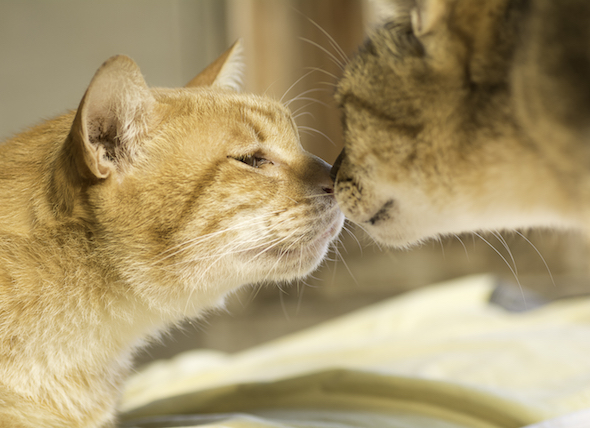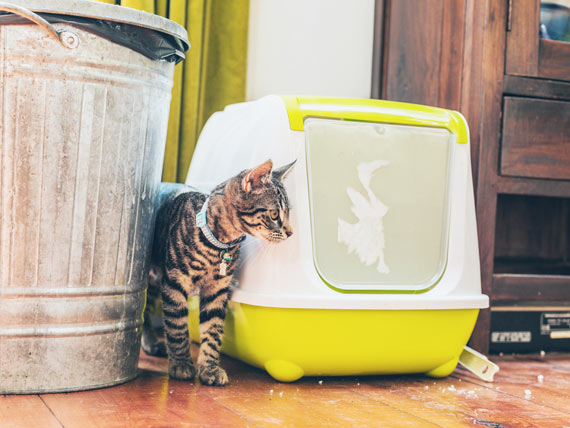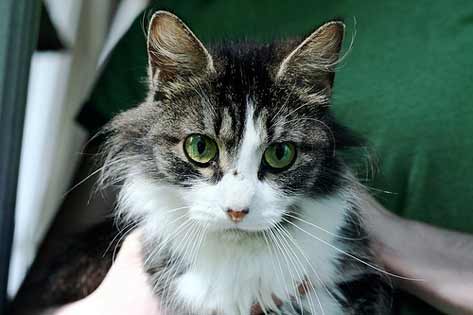Although the Selkirk Rex cat's founder, who lived in Wyoming, used to claim that she named the breed after the Selkirk Mountains, when informed that those mountains were actually located in British Columbia, she confessed to naming the breed after her stepfather. This makes the Selkirk Rex the only breed of cats named after an individual.
Selkirk Rex cats of today are a culmination of three breeds: Persians, Exotics, and Brits, similar to the Cornish Rex and the Devon Rex in that they can be both longhaired, or ShortSelkirk Rex, but are dissimilar in that they have rounded, stocky bodies. The Selkirk Rex also has a naturally curly coat, which unlike the other Rex breeds, is a dominant rather than a recessive trait. They were accepted for championship status in the year 2000. They originated through a natural mutation in a litter of domestic kittens born in 1987.
If you are out and about with your Selkirk Rex, be prepared to be stopped by people who just have to run their fingers through the cat's coat for a good petting. But beware, this cat is not for the faint of heart, or should I say hot-tempered. Selkirk Rex owners are often bombarded with all kinds of hair jokes. Some of these include comments like the following: "This cat is our drip and dry variety," or "Why don't you groom your cat," or even "The cat with the bad hair day." So you need to be like your cat, patient, loving, and tolerant, not of other cats, that's easy, but of your fellow human beings. Selkirks even have curly whiskers; however, they are brittle and may even break off as they grow longer. But you need not worry about your Selkirk Rex losing its curl as it grows older. With that dominant curly gene, they retain the curly coat and whiskers for life.
It is interesting to note how the creation of the Rex name became attached to the British Rex breeds. Rex, as you may know from its use with the Tyrannosaurus Rex, is Latin for 'one holding the station in life of regent or king of a country.' In the late 1890s, a French rabbit fancier named Desire' Callion sold a newly discovered breed of shorthaired rabbit to King Albert of Belgium. He bred them for rabbit show competition in Europe, but obviously they didn't fit the breed standard since they had short hair. Not wanting to anger the king by disqualifying his rabbits, the judges came up with the label Rex and applied it to all of the king's entries. Therefore, every rabbit with the shorthair mutation is now referred to as Rex.
Upon discovery of the first curly haired cats in Cornwall, England, they were dubbed 'Rex' after the short-furred rabbits, and Rex became known as the cats with unusual fur.

 How to Introduce Cats
By Lynne Miller
If your cat used
How to Introduce Cats
By Lynne Miller
If your cat used
 Cat Won’t Use Litter Box? How to Manage Feline Urinary Tract Disease
By Jennifer Coates, DVM
Has your cat s
Cat Won’t Use Litter Box? How to Manage Feline Urinary Tract Disease
By Jennifer Coates, DVM
Has your cat s
 Importance of Antioxidants in Pet Food
By Jennifer Coates, DVM
Antioxi
Importance of Antioxidants in Pet Food
By Jennifer Coates, DVM
Antioxi
 Cat Scratching? Here's How Pet Food Can Help
You're probably tired of seei
Cat Scratching? Here's How Pet Food Can Help
You're probably tired of seei
 A Cleaner, Greener Home for You and Your Cat
Breathe Easier Knowing Your Home is Toxin Free
&n
A Cleaner, Greener Home for You and Your Cat
Breathe Easier Knowing Your Home is Toxin Free
&n